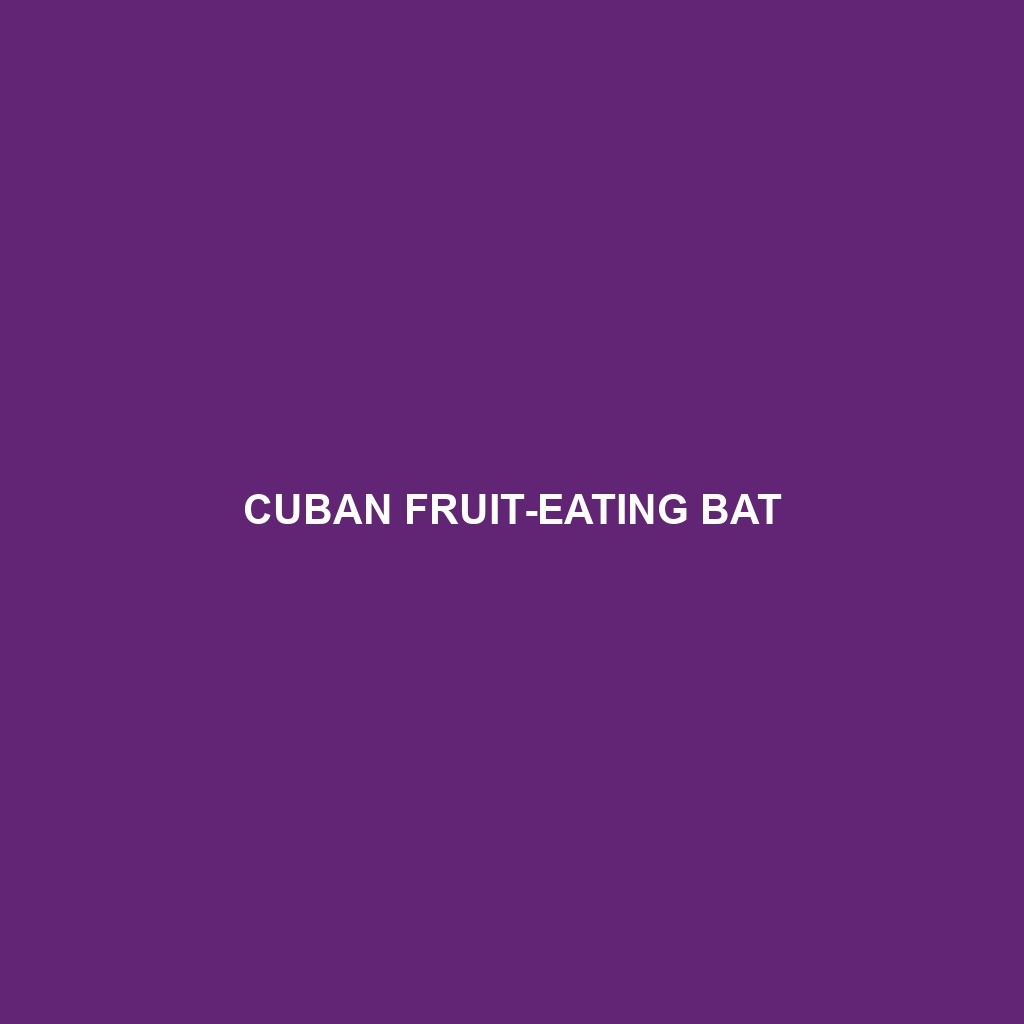Antillean Fruit-eating Bat
Common Name: Antillean Fruit-eating Bat
Scientific Name: Artibeus schwartzi
Habitat
The Antillean Fruit-eating Bat primarily inhabits the tropical forests of the Greater Antilles, specifically in regions like Cuba, Jamaica, and Hispaniola. This species thrives in humid environments such as rainforests and woodlands, often roosting in caves or dense foliage. Their preference for densely vegetated areas allows them to access a rich food source and provides protection from predators.
Physical Characteristics
The Antillean Fruit-eating Bat is a medium-sized bat, typically weighing between 30 to 50 grams. Its wingspan can reach up to 30 cm. The fur is generally light to dark brown, with a distinctive lighter underbelly. They have broad heads and large, rounded ears that enhance their echolocation abilities. Their unique nasal structures are adapted for fruit-feeding, making them easily identifiable among other bat species.
Behavior
This bat is primarily nocturnal, exhibiting behavior typical of fruit bats. It is known for its social nature, often roosting in colonies of up to several hundred individuals. They are skilled flyers, employing agile maneuvers to navigate through trees while foraging. During the night, they display high activity levels as they search for food, often communicating through various vocalizations.
Diet
The Antillean Fruit-eating Bat predominantly consumes a diet of fruits, particularly those from tropical trees, such as figs, guavas, and bananas. Their feeding habits make them crucial for seed dispersal, as they consume fruit and later excrete the seeds in new locations, promoting forest regeneration. This frugivorous diet also means they play a critical role in maintaining the health of their ecosystem.
Reproduction
Breeding typically occurs during the warmer months, with a gestation period of approximately 3 months. Female Antillean Fruit-eating Bats generally give birth to a single pup, which is dependent on the mother for several weeks. Maternity colonies can be formed during the breeding season, providing communal care and protection for the young.
Conservation Status
The Antillean Fruit-eating Bat is currently classified as “Vulnerable” on the IUCN Red List. Habitat loss due to deforestation and agricultural expansion poses significant threats to their population. Conservation efforts are underway to protect their natural habitats, emphasizing the need for sustainable land management practices.
Interesting Facts
1. The Antillean Fruit-eating Bat is known for its remarkable ability to locate ripe fruits through echolocation, even in dense foliage.
2. They have a unique adaptation that allows them to digest a wide variety of fruits, which contributes to their diet diversity.
Role in Ecosystem
As a frugivore, the Antillean Fruit-eating Bat plays an essential role in its ecosystem by aiding in seed dispersal and pollination. These bats help cultivate the growth of plants and contribute to the biodiversity of their habitats. Their interactions with plant species help sustain healthy forest dynamics and promote ecological balance.
